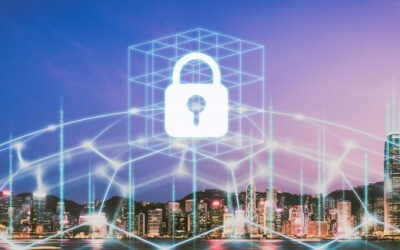Considerations for Building the Modern SOC
Security Operations Centers (SOCs) have become indispensable for providing continuous, proactive, and expert-level security management. The role of SOCs is crucial in protecting organizations against the increasing and evolving threats.
However, ESG Research highlights that “80 percent of organizations use more than 10 data sources for security operations,” emphasizing the complexity and necessity of a well-structured SOC. Not to mention that the average time to detect and contain a breach is around 280 days, which underscores the need for efficient and effective security measures.

SOC Challenges
With the modern SOC also comes many common challenges:
- Staffing and Skill Shortages: Finding and retaining skilled security professionals is a significant challenge leading to overworked staff and burnout.
- Alert Fatigue: SOC analysts often face an overwhelming number of alerts, many of which are false positives. This can lead to important alerts being missed.
- Threat Landscape Complexity: Cyberthreats are becoming more sophisticated and varied. So, keeping up with the latest threat intelligence and attack techniques is challenging.
- Technology Integrations: Integrating various security tools and technologies can be complex and time-consuming. Yet, ensuring seamless communication between tools is essential for effective threat detection and response.
- Response Times: Quick response to threats is critical to minimize damage, as slow response times can lead to significant financial and reputational damage.
- Budget: Budget constraints often limit the ability to invest in the necessary tools and technologies required by a modern SOC. So, balancing cost with effective security measures is a constant struggle.
The SOC Opportunity
The modern SOC brings significant opportunities in combatting cyberthreats through automation, generative AI, and partnerships with Managed Detection and Response (MDR) services.
Automation can significantly enhance threat detection capabilities by processing vast amounts of data quickly and accurately. Automated incident response can reduce the time taken to address threats, minimizing potential damage. Automation also aids in vulnerability management by identifying and patching vulnerabilities promptly, reducing the risk of exploitation. Additionally, automation improves efficiency by reducing the need for manual intervention, saving time and resources, and allowing analysts to focus on more complex tasks. Moreover, automation reduces the risk of human error, thereby improving overall accuracy.
Generative AI plays a crucial role through natural language processing (NLP), which can analyze security logs, reports, and other unstructured data sources to extract valuable insights and identify potential threats. Generative AI can also process vast amounts of threat data from diverse sources, identifying patterns and anomalies that would be difficult for humans to detect.
Partnerships with MDR services provide a managed service where a third-party security provider monitors your environment, analyzes security data, investigates alerts, and responds to threats. MDR focuses on detection and response, utilizing technologies like Endpoint Detection and Response (EDR) to identify and respond to active threats. This solution is particularly suitable for organizations with limited security resources, offering a comprehensive security solution managed by experts.
Value of MDR Providers
The advantages of utilizing external security services are numerous, with key benefits including 24/7 expertise on demand, cutting-edge threat intelligence, scalability and customization, and a reduced operational burden. As teams are tasked with doing more with less, partnerships in the area of MDR/SOC services can help drive the right outcomes working alongside your teams.
Having 24/7 expertise on demand ensures continuous monitoring by experienced security professionals, enabling rapid response to threats even outside business hours. This approach is also cost-effective compared to building and maintaining an in-house security team.
Access to cutting-edge threat intelligence provides up-to-date information on the latest attack techniques and vulnerabilities, facilitating proactive threat hunting to neutralize potential threats before they can cause harm.
Scalability and customization are essential features, as these services offer tailored solutions that fit an organization’s unique size, industry, and risk profile. They are adaptable to changing security needs, ensuring that protection remains robust and relevant.
Finally, these services significantly reduce the operational burden by offloading the responsibility of managing complex security tools and processes. This allows internal IT teams to focus on core business objectives, streamlining security operations and improving overall efficiency.
Assessing an MDR Partnership
When assessing if an MDR provider is the right provider for your organization, don’t overlook these crucial steps:
- Define Your Needs and Goals: Identify specific security goals and budget constraints.
- Evaluate MDR Provider Capabilities: Ensure the provider offers comprehensive threat detection, incident response, and 24/7 monitoring.
- Assess Technology and Integrations: Verify the compatibility of MDR technology with existing security infrastructure.
- Consider Service Level Agreements (SLAs): Establish clear expectations for service quality and response times.
- Conduct Due Diligence: Research the provider’s reputation, track record, and customer reviews.
- Look for Value-Added Services: Consider additional offerings like threat hunting, security awareness training, and vulnerability management.
It’s Time to Move Beyond Traditional Models…
Building a modern SOC requires a continuous evolution of strategies, technologies, and partnerships. Organizations should outline a roadmap for modernization, including technology evaluation, vendor selection, and implementation. Embracing NLP and GenAI functionalities within the SOC framework can significantly enhance security operations.
Additionally, MDR can provide a strong starting point for improving overall security posture. Effective partnerships drive the right outcomes when assessed properly, and modern SOCs must move beyond traditional models to address current and future security challenges effectively.

Justin Tibbs
ANM CSO and VP of Security
A visionary leader at the intersection of cybersecurity and innovation, Justin is a seasoned expert in safeguarding digital ecosystems. As the Chief Information Security Officer (CISO) at ANM, Justin drives the strategic direction of ANM’s cybersecurity strategy while ensuring robust security measures are in place to protect against evolving threats.
With 20+ years of experience in cybersecurity, Justin has honed a deep understanding of the intricacies of cyber defense, risk management, and compliance. His innovative approach to cybersecurity is rooted in a proactive mindset, leveraging cutting-edge technologies and industry best practices to stay ahead of emerging threats. He believes in fostering a culture of security awareness and collaboration, empowering teams to be vigilant guardians of data integrity and confidentiality.
Keeping Your Data Safe While Working from Home: Essential Tips
Working from home has become the new norm for many professionals. But while remote work offers flexibility and convenience, it also introduces unique cybersecurity challenges. Protecting your data is crucial to maintaining productivity and safeguarding sensitive...
Considerations when Implementing Disaster Recovery
Implementing a Disaster Recovery (DR) solution is critical for ensuring business continuity in the event of an unforeseen disaster. Whether it's a natural calamity, cyberattack, or system failure, having a robust DR plan can mean the difference between a minor setback...
Understanding the Fundamentals of SASE
Today’s enterprises are rapidly embracing cloud technology and remote workforces, and traditional network architectures are struggling to keep up. As a result, Secure Access Service Edge (SASE) has emerged as a transformative framework that merges network security...


